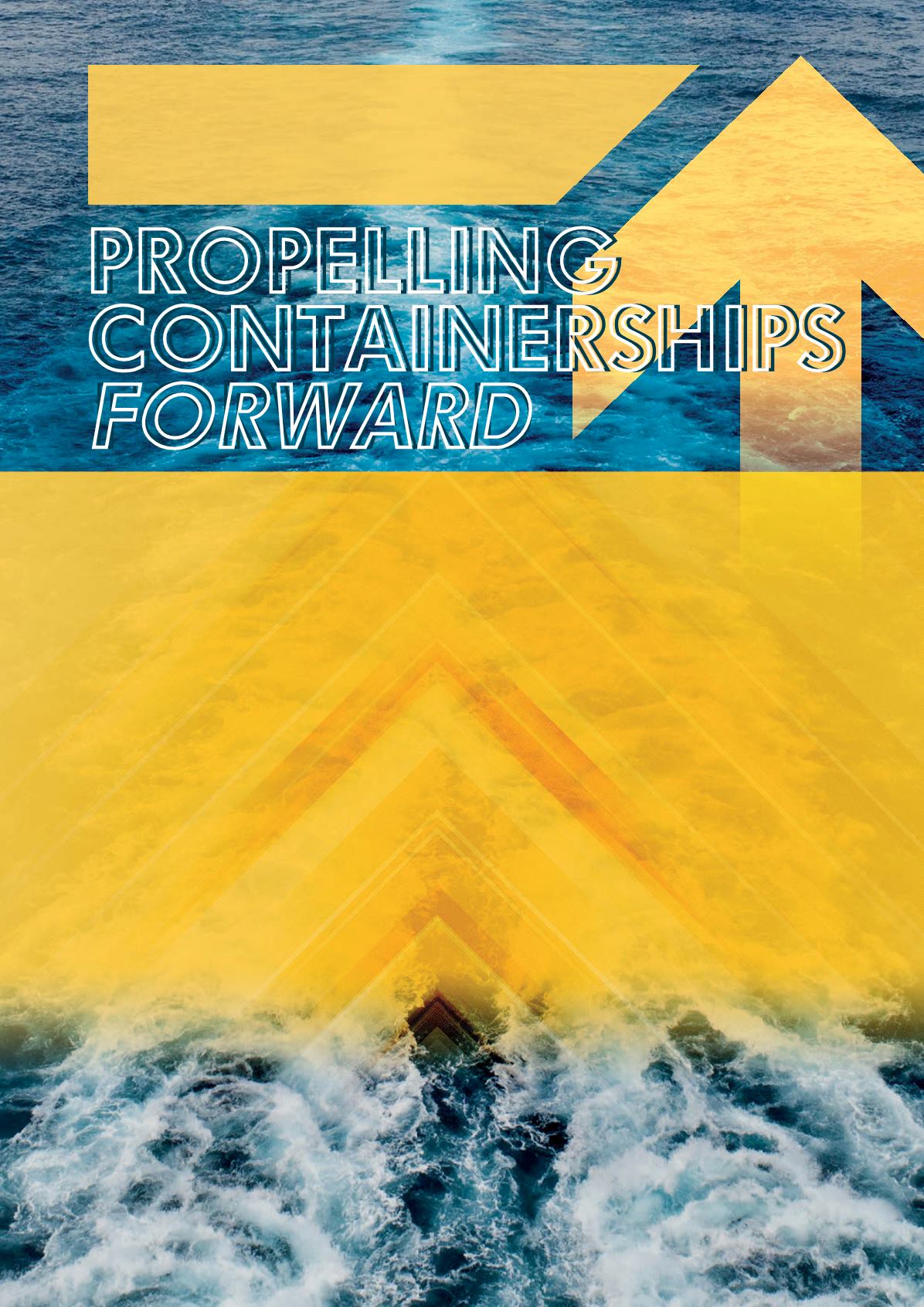
PROPELLING
CONTAINERSHIPS
FORWARD
69
F
rom the beginning of the container era in the 1960s,
the design of container carriers has evolved mainly
to increase cargo capacity. Over the last 10 years,
most significant development has consisted of pushing
the accommodation block forward in order to increase the
number of tiers and, therefore, the container capacity (up to
approximately 20 000 TEU for the current largest vessels).
With few notable exceptions, the propulsion layout has
remained unchanged with a single shaft line driven by a
two-stroke diesel engine without a gearbox. The electric power
is generally produced by several gensets.
Incoming environmental rules on NO
X
and SO
X
exhaust
emissions are a new challenge for ship owners, but also a great
opportunity to appraise innovative solutions.
By 2020 or 2025, ship owners will be faced with a
trilemma:
Keeping heavy fuel oil (HFO) as fuel, but cleaning exhaust
gases from sulfur and nitrogen oxides.
Shifting to low sulfur oil.
Shifting to LNG.
Gaztransport & Technigaz (GTT) and Marine Assistance
have worked together on a study to appraise the technical,
operational and economic aspects of a combined gas electric
and steam (COGAS) propulsion system for an ultra large
container vessel running on gas. This project, initiated by GTT,
DNV GL and CMA CGM, was then compared with other
designs. For the sake of good comprehension, a clarification of
the terms used within this article is provided below:
The HFO design refers to a container carrier using HFO
as fuel and propelled by a two-stroke diesel main engine
and fitted with scrubbers to cope with incoming MARPOL
annex 6 sulfur restrictions.
The dual-fuel design refers to a container carrier using
natural gas and HFO as fuels and propelled by a
two-stroke diesel main engine.
The COGAS design refers to an electrically propelled
container carrier using natural gas as fuel, and powered by
a combined gas and steam power plant.
Container carrier duties
Container carriers are designed to carry goods between
ports on a regular and reliable schedule, and for the most
competitive price per box shipped.
Therefore, both the ship’s cost per journey (that includes
CAPEX and OPEX) and the shipping capacity must be
optimised.
The commercial capacity of a container carrier is expressed
in terms of 20 ft boxes (TEU). These boxes can be counted on a
payload basis (howmany containers of a given weight can be
loaded onboard) or on a geometric volume basis (howmany
Victor Gibon, Marine Assistance, France,
presents an innovative LNG-fuelled ultra
large container vessel powered by a COGAS
system featuring gas and steam turbines,
as well as electric propulsion.


